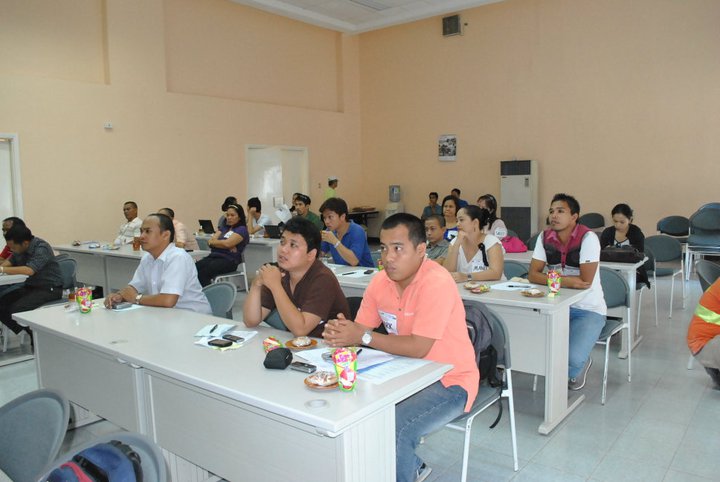HOW TO CHANGE THE CONSTITUTION IS THERE A “RIGHT TIME†FOR CHARTER CHANGE? WHAT CHARACTERIZES TH

By: Lito C. Lorenzana | October 3, 2013
President at Centrist Democracy Political Institute
1Loves.
0Comments.
0People boxed this.
HOW TO CHANGE THE CONSTITUTION IS THERE A “RIGHT TIME†FOR CHARTER CHANGE? WHAT CHARACTERIZES THE RIGHT TIME? WHAT IS THE WRONG TIME FOR CHARTER CHANGE?
I Historical View A cursory historical review of both successful and failed attempts to change the Philippine Constitution will give us a better perspective of the questions at hand. This should bring us back to the 1935 document that served our country well until the 1971 charter that was a monstrous perversion by the Marcos regime. The subsequent Cory Aquino constitution written by her appointed commissioners in 1987 has been subjected to attempts at change: from President Ramos’ PIRMA, President Estrada’s CONCORD to the recent aborted President Arroyo’s FEDERALIST-led 2006 CONCOM/ADCOM.
A common denominator in all these attempts after the 1935 constitution was that the main proponents were sitting presidents. Each advanced a legitimate argument that the basic law needs to be changed to respond to the present requirements of the global political, social and economic realities. The world was fast changing and these changes accordingly were unforeseen by the original framers compelling an overhaul rather than piecemeal amendments.
Each administration, given the benefit of the doubt, pressed forward its vision of good governance, a society it seeks to mold and a legacy it must leave behind - as raison d’être for their proposed changes.
Marcos envisioned a new society of disciplined citizenry, proud of its heritage, a Maharlika (whatever that means), a vibrant democracy thriving under a benevolent “Apoâ€, a strongman, a dictator in control of all government institutions. To bring about this vision, he twisted, influenced and bribed his concon, subjecting the framers to his will. He got his constitution.
Cory, who at the outset confessed to a disdain for any “political ideology†simply yearned for a “return to democracy†as a repudiation of Marcos’ martial law. Her inward looking economic agenda was centered on “nationalism†thus reflecting the current provisions stunting foreign ownership and investments in Philippine assets especially in the natural resources sector.
Ramos’ vision encompassed the global economic certainties and pushed for a “tiger economy†before the end of the century - an emerging market economy with the millions of OFWs as the main pillar for growth. Estrada’s proposed changes to the constitution hewed closely to his predecessor.
GMA’s alliance with the Federalist groups proposed a more comprehensive document incorporating JDV’s Christian Democrat’s bias toward parliamentary government and Ramos’ original free global market provisions.
In all these, disciples of the status quo were reluctant to support any change. Vestige interests dictate the derailment of any effort at transformation. These could be tolerated if through a defined transparent process, the issues are truly aired, dissected and debated openly. Ramos’ 1997 endeavor was perceived to be a surreptitious scheme to extend his term. Church-led protests wrote finis to this effort. Estrada’s 2000 CONCORD was never given serious consideration.
GMA’s 2006 CONCOM/ADCOM had a better 2 year run. However her credibility which started to deteriorate from the time of the 2004 presidential election questioning her legitimacy caught up the Federalist led alliance in a swirl of partisan politics. In this toxic atmosphere, a parallel palace-led misadventure, the People’s Initiative, further obliterated whatever trace of good in the consensus building process the CONCOM/ADCOM brought to the discourse.
II The “Right Time†Right/wrong time assessments are dependent on where one stands on the power equation. From the main proponent’s point of view, his take on the urgency of the changes, a strategy on how these are communicated to the constituents and where eventually he leads his constituents will define his “right timeâ€. And in the same vein, all participants and stakeholders in a consensus demarcate their own “right timeâ€. In essence, it is all very subjective. The dominant argument will prevail.
A corollary question begging for answer however is: Will the attempt at Chacha be successful?
Let us scrutinize the two successful attempts and their characteristics.
Marcos was so enamored with power that extending his term beyond 1969 marked out his “right timeâ€. Hiscontrol of the bureaucracy and all levers of the coercive establishment reinforced and made easy his “right timeâ€. A dictator can do what he wants – and he did.
The people power revolution of 1986, which was a decade in the making, provided a dramatic backdrop for the promulgation of the 1987 Constitution. A consensus for change, any change for that matter, dominated the body politic. The euphoria pervading at that time and the high expectations of the long suffering masses disregarded and swept away a real dissection of the provisions of the nascent constitution. In a sense, the power brokers who scorned change and were expected to resist any shock to the status quo were caught wanting - though current critiques would opine that the provisions of the Cory Constitution were shaped by the aspirations of the elite – of whom Cory was destined, by virtue of birth, to champion. But Cory’s credibility was at its peak. She could do no wrong.
Her “right time†was defined for her by these combinations of events. At the outset, she may not have fully realized she had a choice. She could have ruled under the transitional “revolutionary constitution†a while – a document largely written by her inner circle. By giving herself a little more time, and discounting the confusion of a recent revolution, a more permanent and well thought out constitution could have ensued.
Two other important factors among others assured the acceptance and passage of the 1987 charter referendum: the church under the tutelage of the eminent Cardinal Sin and a pliant collegial body of Bishops supported the conservative and religious Cory; and more importantly, the opponents of the regime were silent and in no mood for debate. They were just waiting for the opportune time to initiate a regime change. 12 serious coup attempts during the 6 years of Cory administration attested to this.
III Characteristics of the “Right Time†As gleaned from the narrative, certain characteristics emerge that will spell the success or failure of an attempt at chacha (assuming changes to the constitution are really urgent and legitimate).
· Credibility of the sponsors. The leadership must be perceived to act for the common good and their personal agenda, curtailed. Absent the trust of the people, the exercise will fail; · Seriousness and resolve to push for the legitimate changes and the political will of the proponent to see things through; · The provisions must meet with the expectations of the constituents – and must be seen to eventually improve their lives; · Conduct widespread debates and airing of the issues and their ramifications; · Arrive at a consensus by the majority of the stakeholders and allies; and · An overall strategy from the very start must be fashioned and constantly reviewed.
IV Postscript Tying these to the recent experience of Chacha 2006, the causes for failure are myriad, but one factor can be surgically pinpointed. This is all about GMA’s diseased credibility as the main proponent of change. Partisans refused to discuss the issues – they attack her motives. In their frustration, those who were her allies and advocates were prepared to argue, even up to now, to give the current dispensation what they want (term extensions), as long as they get theirs (federalism, globalized economy…).
This paper will end with a fleeting discussion on how the modes of changing the constitution will affect the “right/wrong timeâ€. In 2006 the debate on “ConCon versus ConAss†preceded in fact the debate on the proposed provisions per se. Constitutional Convention was the preferred popular view and supported by the greater majority of the elected local officials. A nuance of this approach suited the agenda of these politicians – enabling them to expand their dynasties (field wife, mother, children for local offices). On the other hand, this gave an opening for new players (NGOs, Pos, Coops, etc) to be introduced into the political landscape. This mode was basically opposed by the regime as too expensive.
Constitutional Assembly on the other hand excluded the local officials from the chacha process relegating them to minor roles. From the regime’s side, the process is reduced into a diversion where it can apply pecuniary persuasion on unscrupulous solons. With a smaller number – notwithstanding a disparity in appetites, the cost benefit favors the regime.
Today, conventional wisdom dictates that the “right time†for charter change is 2010. This marks the exit of GMA and the entry of new actors for the next 6 years – making the latter potential allies in the endeavor. Learning from the recent past, election of concon delegates can be done simultaneously. This is however another topic which will be discussed by the next set of presenters.
Lito Monico C. Lorenzana
TACDRUP, Board Chairman/President
Consultative Commission, Secretary General
Advocacy commission, Chairman
CMFP, Board of Advisors
October 23, 2008
Davao City
- More From this Author
- Comments








